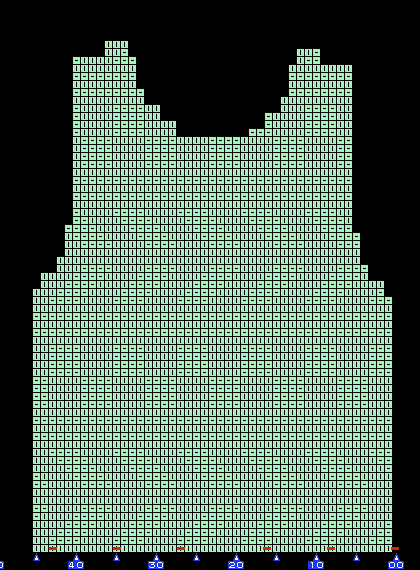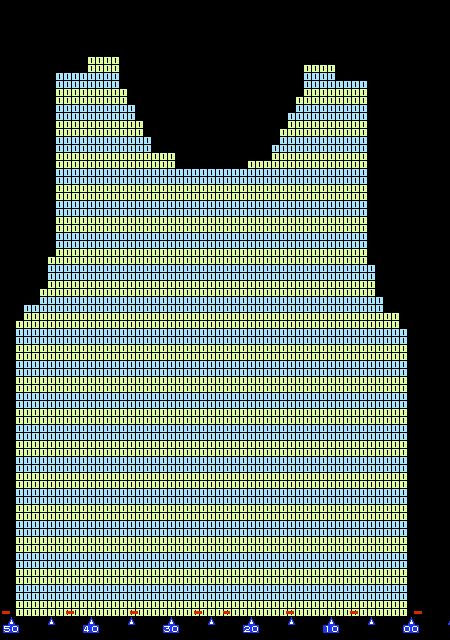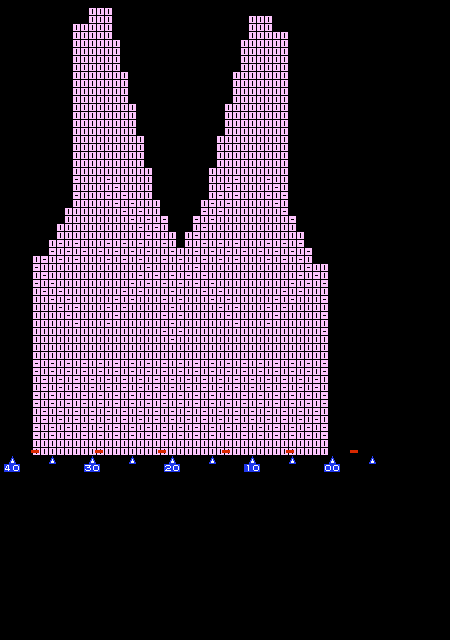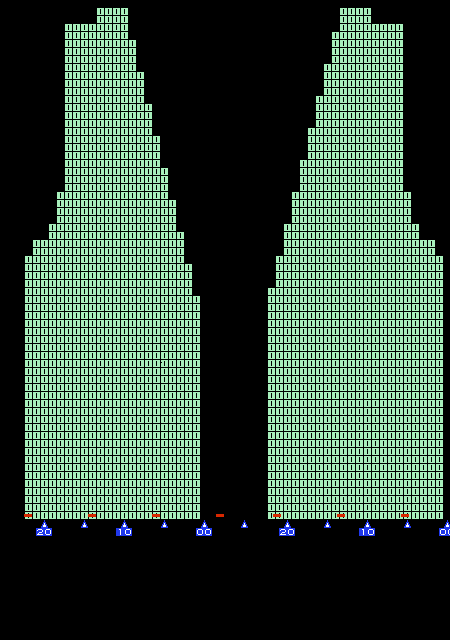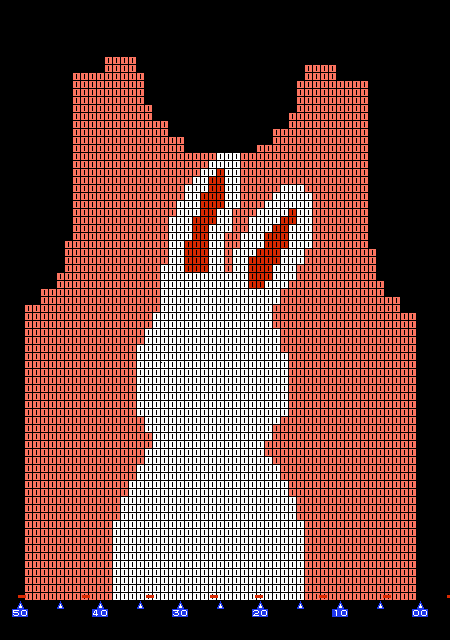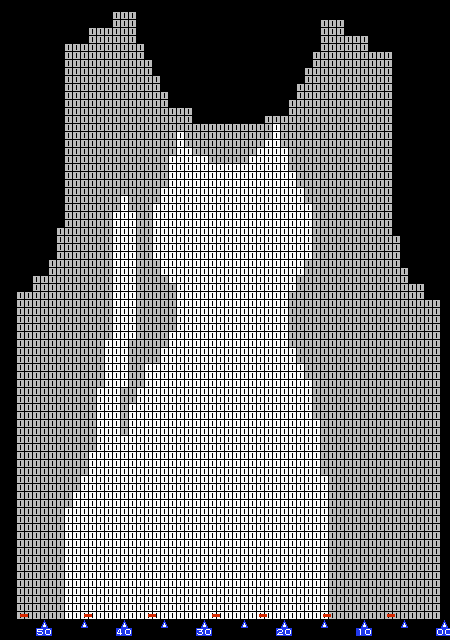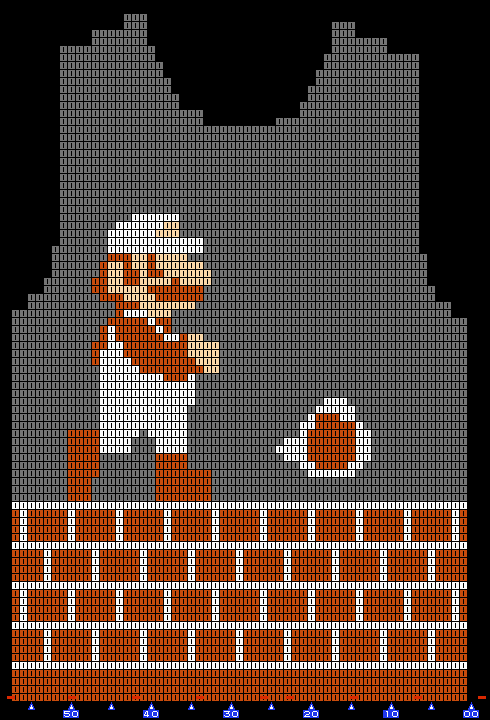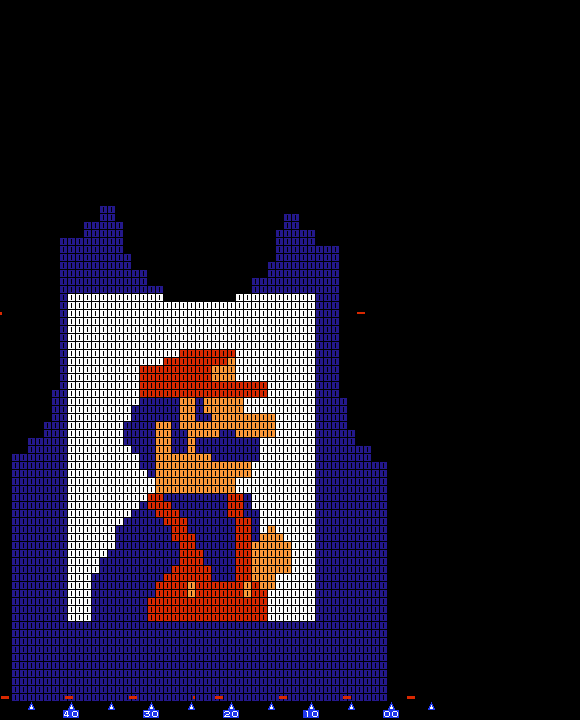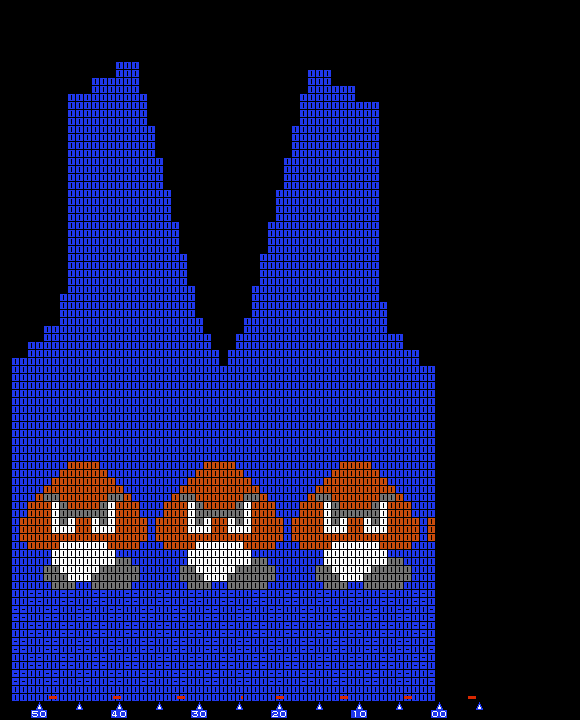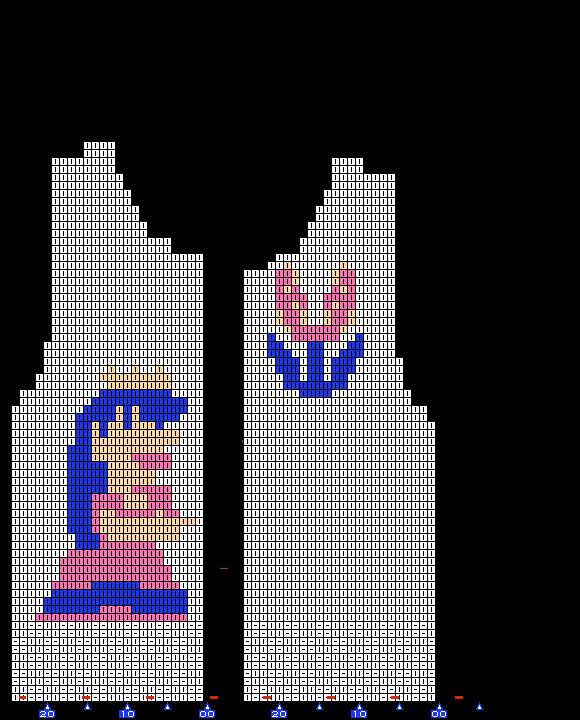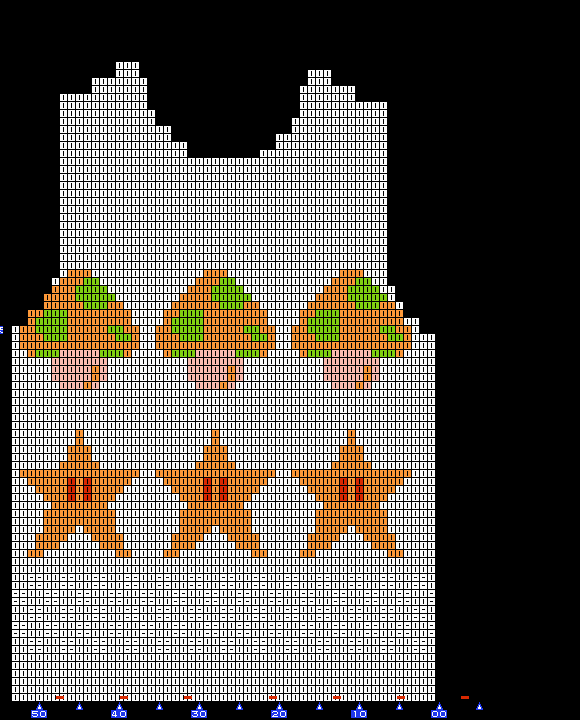So as we go through all of these games I’ve been trying to make sense of what’s actually happening and how it all links together. I firmly believe the complete story of Mario needs to be documented, so I’m going to be maintaining a running explanation here for what happens in-between each game. Because I’m playing the games in release order, there will be revisions whenever a game takes place earlier in the timeline than previously-released games.
The Story of Mario
Not-so-humble beginnings
Mario has always been special. He and his twin brother Luigi were borne of magic in a fantastical land. On the evening of their birth, while being literally delivered to their parents by The Stork, they were attacked by Kamek, caretaker to the young Prince Bowser Koopa, who had foreseen that they would become a great nuisance to his master in the future (Super Mario World 2: Yoshi’s Island, SNES, 1995). Luigi was snatched away, while Mario fell from the sky, directly onto one of the Yoshies of Yoshi’s Island. The Yoshies decided to protect him and, discovering that he had an inherent sense of where his brother was, ferried him across the island, fending off and eventually defeating Kamek and his Toadies, and finally returning both twins to The Stork to finish their delivery.
As Mario was growing up, he found himself being tormented by an impish creature invading his subconscious, a doppleganger he called Wario, who repeatedly got him into trouble.
At some indeterminate point, Mario and Luigi’s parents decided to leave their magical land and move to Earth, specifically Brooklyn, where they remained until the brothers grew up and left home to begin their own adult lives.
Mario the Blue-collar Working Man
Mario began his career as a carpenter (Donkey Kong, Arcade, 1981). One day Donkey Kong broke into Mario’s work site with a kidnapped Pauline and busted everything up while scaling the unfinished building. Mario followed the rampaging gorilla, took him down, and saved the day. He was then immediately fired for violating safety regulations scaling a hazardous structure when he should have left the heroics to the proper authorities.
Mario was left with no job, but he did have a captive gorilla, so he decided to try being an animal tamer (Donkey Kong Jr., Arcade, 1982). This career was cut short when Donkey Kong Jr. arrived to rescue his father - they smashed through Mario’s secret lair and left him for dead.
At this point, Mario got some help from his brother Luigi, who got him a job at the bottle factory with him on the assembly line (Mario Bros., Game & Watch, 1983). However Mario, having learned from losing his first job, made note of the lack of proper safety equipment throughout the factory. When he threatened to report their violations to OSHA, the bosses decided to sabotage Mario, running the assembly line at a pace nobody could possibly keep up with. A few pallets of broken bottles was all the excuse they needed to fire both brothers.
Before long, Mario found another factory job making cement (Mario’s Cement Factory, Game & Watch, 1983), but this work site was even worse than the last one. He was forced to work on high catwalks with no railings, and the unforgiving pace of the factory line led to cement overflowing directly onto other employees. Once again Mario threatened to report their safety violations, and once again he found himself sabotaged and fired.
To Hell and Back
Sick of dealing with the corrupt industrial sector, Mario got together with Luigi and established a small plumbing business (Mario Bros., Arcade, 1983). They quickly lucked out by landing a government contract to maintain the sewers of New York City. Little did they know that the city sewers contained a portal to the Mushroom Kingdom, where King Bowser Koopa was on the warpath. A contingent of Bowser’s troops stumbled through the portal, and the brothers suddenly found themselves fighting monsters to keep the sewers safe. They stopped the unintentional invasion in its tracks, and were heralded as heroes by the city.
The brothers’ actions caught the attention of some federal big-wigs who wanted to see those heroics happening on their front lines, and before long a pair of draft notices arrived at their door. While Luigi failed his physical and was sent home, Mario was immediately deployed overseas (Mario’s Bombs Away, Game & Watch, 1983). Mario’s status as a hero caused him to be fast-tracked directly into the least competent squadron in the entire armed forces, with the expectation that he would whip them into shape. Of course, Mario had no military experience or training what-so-ever, and was met with nothing but disaster. A few too many friendly-fire incidents forced the generals to recognize that this crazy idea wasn’t working out, and Mario was dishonorably discharged.
Mario returned home shaken. Rather than return to labor-intensive, stressful blue-collar work, he found a relaxing job as a tennis referee (Tennis, NES, 1984), and to relax further he took up golfing as a hobby (Golf, NES, 1984). Then one night he went to see a show at a local circus, and found Donkey Kong performing there (Donkey Kong Circus, Game & Watch, 1984). They wound up speaking after the show, where Mario learned that this was in fact Donkey Kong Jr., who had grown up and taken his father’s name as is their tradition, and was desperately trying to make enough money to save his father, who had been chased off into space by the crazed Stanley the Exterminator (Donkey Kong 3: Dai Gyakushū, Sharp X1, 1984). Mario offered to help, and together they put on an exhibition hockey match to raise funds (Donkey Kong Hockey, Game & Watch, 1984).
Helping the gorilla was just what Mario needed to reinvigorate himself and get back into the workforce. Luigi once again got him a job at his new workplace, a demolitions company (Vs. Wrecking Crew, Arcade, 1984), and once again Mario found himself threatening to report numerous safety violations. Foreman Spike, like Mario’s previous supervisors, attempted to sabotage Mario’s performance to create an excuse to fire him. Spike, an accomplished dark magician, filled their work sites with sentient attack wrenches, eggplant warriors, and mystic flames. Luigi was quickly scared off and quit on his own, but Mario toughed it out, even when Spike began attacking him personally (Wrecking Crew, NES, 1985), and after gathering evidence across dozens of sites, he submitted his report to OSHA, who shut the whole company down.
Hero of the Mushroom Kingdom
Once again unemployed, Mario is approached by a strange mushroom person. News of his heroism in the sewers managed to reach the Mushroom Kingdom, where Bowser’s conquest was complete. He’d used dark magics to turn the people of the Mushroom Kingdom into plants and rocks, and had captured the only one who could break the spell, Princess Peach Toadstool (Super Mario Bros., NES, 1985). They implored the brothers to come to the Mushroom Kingdom, defeat Bowser’s minions as they had once before, and rescue their princess and all the kingdom’s people. Unable to refuse their pleas, Mario and Luigi did exactly that, and after a long journey that led them through every one of Bowser’s fortresses, finally found the princess and freed the kingdom.
Reckless Thrill-Seeking
The Mario brothers returned home with a fortune in gold coins, which quickly put them back in local headlines. First, as a means of relaxing after their arduous journey, they went on a luxurious globe-trotting golfing tour (Family Computer Golf: Japan Course, Famicom Disk System, 1987; Family Computer Golf: U.S. Course, Famicom Disk System, 1987). But on returning home, Mario found himself itching for excitement, and quickly began to miss the thrill of adventure. He was briefly sated by a gig as a celebrity boxing referee (Mike Tyson’s Punch-Out, NES, 1987), but just being near the action wasn’t enough, so he decided to enter the dangerous world of high-speed Formula-1 racing. Despite having no experience in racing and not being a professional driver of any sort, Mario was able to bribe and charm his way directly into the big leagues (Famicom Grand Prix: F-1 Race, Famicom Disk System, 1987). Some league officials weren’t terribly happy about this though, so they tricked him into entering the races with a flimsy golf cart dressed up like a real race car, in hopes that he would become discouraged by losing so badly and leave. Miraculously, Mario still placed highly in all of his races - he did so well, in fact, that he quickly became bored, retired at his peak, and went off to find better thrills. He started combining high speed off-road rally racing with hard hallucinogenics (Famicom Grand Prix II: 3D Hot Rally, Famicom Disk System, 1988), and surely would have continued this spiral straight down to his grave if not for an unusual dream.
Return to Adventure
Mario, Luigi, Princess Peach, and the princess’s personal attendant Toad, all found themselves one night in Sub-Con, the world of dreams, which had been conquered by the evil Wart (Super Mario Bros. 2, NES, 1988) who, unbeknownst to Mario, was actually the same impish creature he had once called Wario. They traversed the dreamscape, defeated Wart and all his minions, and freed the native Subcons. Prompted by this dream, Mario and Luigi returned through the warp pipes to the Mushroom Kingdom to visit with the princess. They discovered that while they had successfully beaten Bowser out of the Mushroom kingdom, he had sent his lieutenants, known as the Koopalings, to conquer all the other kingdoms of the Mushroom World, once again using the Koopa clan’s black magic to transform their kings into various creature (Super Mario Bros. 3, NES, 1988). For each kingdom, Mario and Luigi set out, fought their way through Bowser’s armies, defeated the Koopaling in command, and retrieved the magic wand to break the spell on the king, with Princess Peach cheering them on by letter along the way. While they were freeing the final kingdom however, Bowser once again attacked the Mushroom Kingdom and captured the princess, forcing the Mario brothers to attack the dark heart of the Koopa clan’s own territory to rescue her.
For his repeated heroism, Mario was granted his own castle on a small island along the outskirts of the Mushroom Kingdom, and news of his deeds spread far and wide.
Before he could even properly settle in, Mario was approached by a citizen of the distant Sarasaland with a plea for help. A strange space monster by the name Tatanga had conquered their lands and was attempting to forcibly marry their Princess Daisy (Super Mario Land, Game Boy, 1989). Mario, unable to refuse the call to adventure, set off to save Daisy, while Luigi, having had enough excitement, went back to Brooklyn to tie up their affairs on Earth so they could reside in the Mushroom World permanently. Mario quickly and handily defeated Tatanga and saved Sarasaland, and he decided to take some time to explore the local culture before returning to the Mushroom Kingdom, taking part in their bizarre ball-based sports (Alleyway, Game Boy, 1989).
Immediately upon returning, Mario discovered that his castle had been stolen (Super Mario Land 2: 6 Golden Coins, Game Boy, 1992). The impish creature that had been Wart, having found and been defeated by his one-time tormenting victim, became obsessed with Mario, took on the guise of Wario once more, and found his way out of the subconscious realm and into the Mushroom World, where he immediately took control of the undefended castle. Mario was forced to hunt down six golden coins across the island to open the magical lock Wario had placed on the gate, before he could fight off Wario himself to reclaim his land.
Mario the Celebrity
When Mario arrived back in the Mushroom Kingdom, he found that it was in the grip of an epidemic. A cure had already been developed, but many skeptical Toads were refusing to take their medicine, so the Princess asked Mario to act as a spokesman, and through a series of clever adverts wherein Mario dressed as a doctor and fought off giant viruses, enough people were persuaded for the epidemic to subside (Dr. Mario, NES, 1990).
With the kingdom still recovering, Bowser jumped at the opportunity to snatch the princess through weakened defenses. He brought her to his new stronghold in Dinosaur Land, which he had recently conquered and fortified, and once again Mario and Luigi set out to rescue the princess, and liberate the local population of Yoshies while they were at it (Super Mario World, SNES, 1991).
After returning from Dinosaur Land everyone finally had some time to relax, and Peach informed Mario that she wished to visit his home world for a vacation. So Mario brought Peach, Luigi, and Princess Daisy out golfing all around the Earth (NES Open Tournament Golf, NES, 1991). The trip was so unbearably dull that upon returning, the princess revoked Mario’s noble title, land and fortune, and forced him to be her court jester as punishment (Mario the Juggler, Game & Watch, 1991; Yoshi, NES, 1991). With his finances in the Mushroom Kingdom ruined, Mario desperately began cashing in on what celebrity he still had on Earth, selling his likeness (as well as that of his friends, family, and foes) wherever he could (Super Mario Bros. Print World, DOS, 1991; Super Mario Bros. & Friends: When I Grow Up, DOS, 1991; Mario Paint, SNES, 1992; Mario’s Early Years, DOS, 1993).
Unusual Adventures
One day while wandering around the Mushroom Kingdom, Mario and Luigi came across a magic typewriter (Mario Teaches Typing, PC, 1992). Mario attempts to use it, but his typing is so sloppy and full of errors that it explodes in his face. He learns to type well while seeking out and reassembling the pieces, and upon relating the tale to the princess, is allowed to become the kingdom’s official typing tutor in lieu of continuing to be its jester, since typing was clearly a vital skill for everyone to learn.
Mario was so busy managing his finances and reputation, he was taken completely by surprise with the princess, inspired by her time spent in golf carts on Earth, announced the creation of a new Mushroom World institution: Go-Kart Racing (Super Mario Kart, SNES, 1992). Invigorated by the thought of returning to his F-1 glory days, Mario convinced a reluctant Luigi to join him in competing. They raced against the princess herself; Toad, the princess’s personal attendant; Donkey Kong Jr., still trying to raise money to save his father from space; Yoshi, the ambassador to the Yoshies; Bowser, invited in hopes of building peace between the kingdoms; and one of Bowser’s Koopa Troopas.
The racing, of course, did nothing to appease Bowser’s ambitions, and merely served to inform him of the Earth as the sports’ origin. He quickly mobilized a strike force to Earth and had a fortress built in Antarctica to be his local base of operations. He devised a plan to wipe the planet clean for a swift conquest by melting the ice caps, and so sent his troops around the world to steal valuable cultural artifacts to ransom for the funds needed to generate enough heat (Mario is Missing!, DOS, 1992). Mario, Luigi, and Yoshi set off to stop him, but when Mario entered he was tricked and captured, leaving Luigi and Yoshi to defeat the Koopas, return all the stolen artifacts, and save the day.
Following his rescue, Mario decided to reward his savior, Yoshi, by getting a job as a bakery technician and sneaking him as many cookies as he could (Yoshi’s Cookie, NES, 1992). Mario’s thefts were discovered before long and he found himself being fired once again, but he developed a close bond with Yoshi in the process. While Mario was off hanging out with Yoshi however, Bowser was very busy. Combining the Koopa Clan’s dark magics with technology they’d encountered on Earth, Bowser’s forces were able to build giant mechs, which they used to conquer the nearby Jewelery Land (Yoshi’s Safari, SNES, 1993). The Koopa Clan weren’t the only ones to develop new weapons from Earth tech however - Princess Peach sent Mario to rescue Jewelery Land with the Mushroom Kingdom’s experimental Super Scope energy cannon. Mario, astride his new best friend Yoshi, tore a bloody swathe through the Koopa forces, destroying every one of their mechs and severely injuring Bowser in the process. The people of the Mushroom Kingdom were utterly horrified, and so Bowser and the Princess came to an agreement that neither Kingdom would build, develop, or use such weapons ever again.
Of course, the agreement didn’t technically ban the non-weaponized use of magic-infused technology, which meant that Bowser was not technically breaking the treaty when he used a time machine to steal artifacts from across Earth’s history for his personal museum (Mario’s Time Machine, DOS, 1993). Of course, Mario didn’t care one whit for the technicalities, broke his way into Bowser’s museum, and used the time machine himself to return all the artifacts before history could be changed irrevocably.
